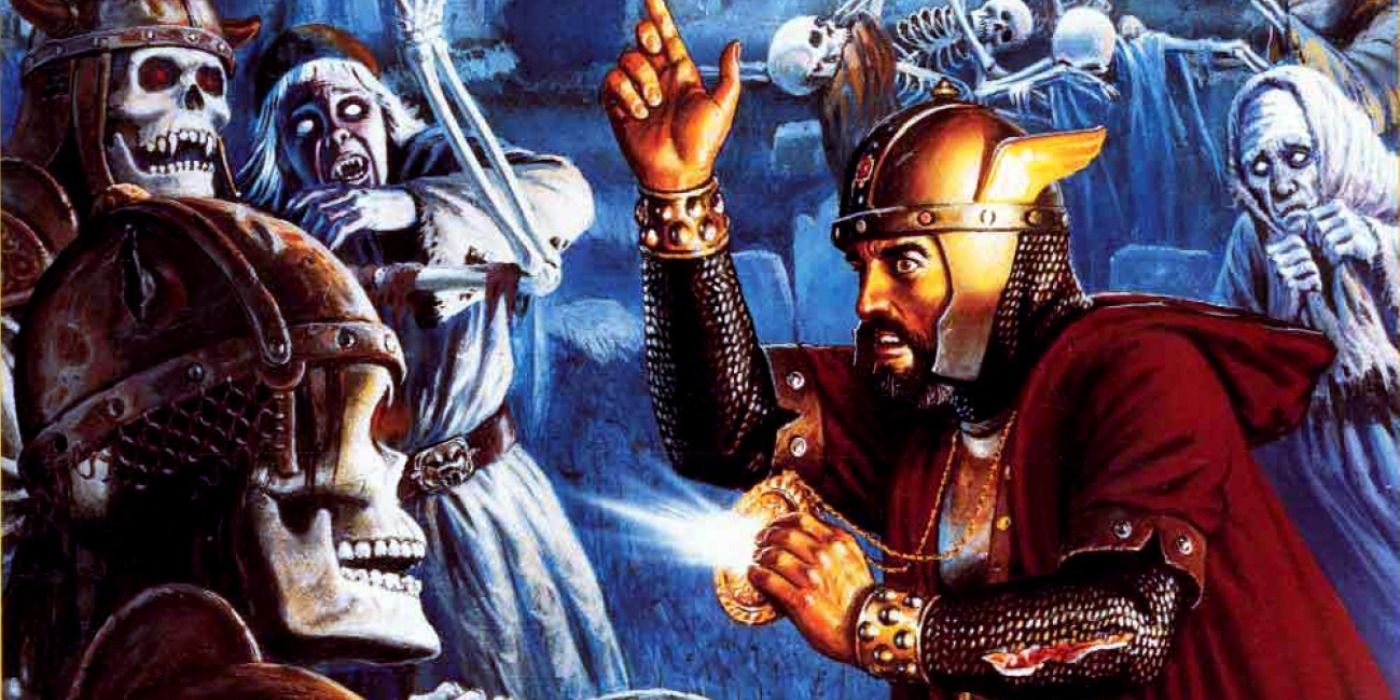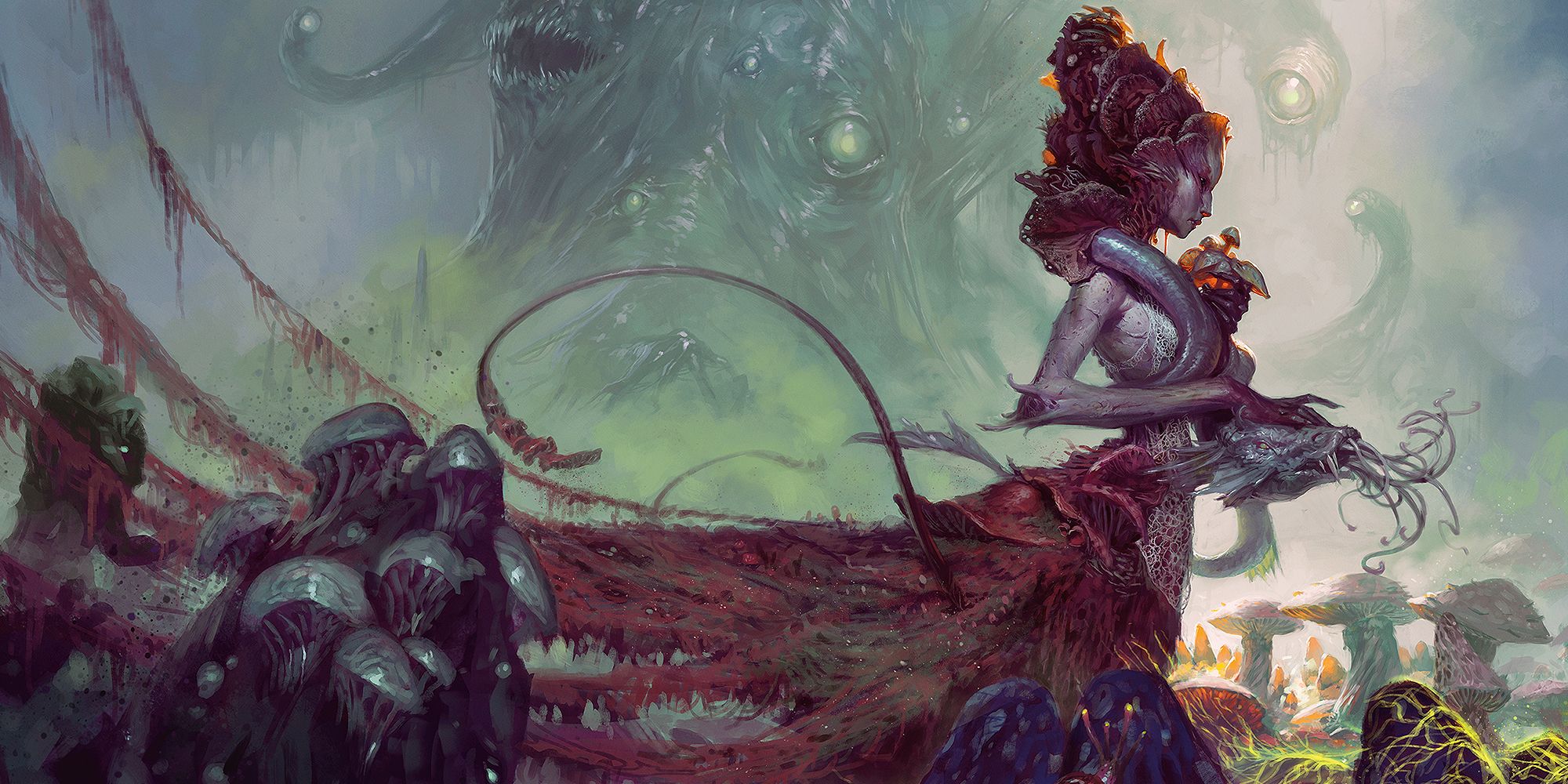Dungeons & Dragons is well-known for its murder hobo parties, where the players have no problem killing and then stealing loot from the corpses of enemies. Not all campaigns need to be about death and destruction, as a pacifist D&D campaign offers a lot of interesting challenges for a group that is used to solving all problems with the tip of a sword. This kind of campaign can be heavy on roleplaying and offer some challenging questions to the players, so it's not something that every group would enjoy, but it can be a fascinating experiment for those brave enough to try.
In 2020, Wizards of the Coast released the first official D&D campaign that advertised itself as having a pacifist route - The Wild Beyond The Witchlight. This campaign starts out in a carnival, where it's unlikely that the party will be murdering the patrons. The group is soon sent into the Feywild, which runs on different rules than the Prime Material Plane. Each of the Domains of Delight has rules that are determined by the presiding archfey and working out how these rules work is part of the puzzle of the campaign.
The D&D groups that want to try something new should consider a pacifist campaign. It's best to run a Session Zero to determine some of the rules going in, including the limits of their beliefs, the reasons why they have their beliefs, and the consequences for breaking them. A pacifist campaign in D&D can deal with some heavy issues, so the group should all be on the same page before starting one.
Reasons For Running A Pacifist D&D Campaign
A pacifist campaign presents a unique challenge for a D&D group, as they cannot solve every problem by blasting it with spells. This means that foes need to be outsmarted, avoided, or incapacitated. It also raises the point of what to do with foes who have been defeated in combat, though this isn't something that should come up too often, as groups will quickly tire of needing to babysit prisoners. A pacifist campaign is better suited to groups that enjoy the roleplaying aspect of D&D, as it presents lots of opportunities to engage with foes outside of combat. A city-based campaign would also be a good fit for a pacifist, as legal boundaries present a built-in reason for why the party won't just be murdering people on the street. The presence of law enforcement also means that they can deal with foes in the aftermath of a battle.
In terms of the in-game reason for playing a pacifist D&D campaign, it can be as simple as the characters holding to a moral belief that prevents them from taking the life of another sentient being. For clerics and paladins, this could be tied to the source of their faith and power. It's also possible that the setting in the game has laws with steep consequences for murder. This only counts if someone is caught, and it's likely that murders still take place, in terms of accidental deaths, acts of passion, or calculated assassinations. The character might simply fear the legal repercussions of taking a life and will avoid doing so at all costs.
D&D Pacifist Campaign: Rules Of Engagement & Monsters That Don't Count
Playing a pacifist D&D character could refer to someone who will not take a life, but will defend themselves or others from harm, should the situation call for it. The current D&D Player's Handbook makes being a pacifist in combat a little easier than in previous editions of the game. There is a section titled "Knocking A Creature Ouy" in the Combat chapter of the book, which states that the player can decide if they are trying to knock an enemy out. This happens when using a melee weapon to knock the opponent to zero hit points and the decision is made when the attack connects, so the player won't accidentally kill an opponent.
This cannot be done with ranged weapons, unless the DM wants to create a house rule that lets slings knock people unconscious, as a way of making the weapon more viable. This also cannot be done with damaging magic spells, though there are lots of spells that can incapacitate a foe through other means. A pacifist spellcaster would do well to focus on abjuration and enchantment spells, as many of these are centered around shutting an opponent down, without killing them.
The D&D group should establish beforehand whether certain foes can be destroyed without forcing the character to give up their beliefs. A lot of undead creatures are mindless abominations that are created by necromancy, so players might see destroying these bodies as a way of putting the dead to rest. There are many extraplanar creatures that return to their plane upon death, including fiends and elementals, so the players should have no problem going all out against them, as long as they're fighting on the Prime Material Plane. There are also construct monsters that are not sentient, like iron golems, which would also be fair game. The question that the group needs to ask is if their beliefs still apply when the creatures are sentient or whether dropping them to zero hit points will do them any permanent damage.
The Price Of Failure & The Power Of Forgiveness In D&D Pacifist Campaigns
A pacifist campaign in D&D is all about putting the players into tough moral quandaries. In many cases, killing a foe is the easiest way of dealing with them, so what happens when this is off the table? If slaying an evil king will stop a war that will lead to the deaths of thousands of people, then is an assassination justified? If there's a Joker-style killer on the loose who keeps escaping from imprisonment and taking more lives, then wouldn't killing them potentially save more lives in the future? These are the kinds of situations that can make for intriguing Dungeons & Dragons campaigns and some excellent roleplaying opportunities.
There is also the question of what happens if a player crosses the line. What if a character decides to take the life of another being, regardless of the context? Are there legal ramifications that the players will need to deal with? Would the other party members need to defend their friend in court and be willing to lie on their behalf? What about the clerics and paladins of the group who belong to the Lawful Good alignment? Will they lose their powers when they break their personal creed? A pacifist campaign should be more about knocking enemies unconscious and leaving them for the authorities.
The moral and legal issues that come up with murder should be the main point of the campaign, as well as the question of forgiveness. The recent changes to the lore of D&D have downplayed the notion that creatures of a specific race are irredeemably evil, save for maybe fiends. A story of redemption, either from a foe who has fallen to the dark side, or a player that gave up their beliefs to save the lives of others, can be a thrilling one, and make for an interesting change of pace in a Dungeons & Dragons campaign.




